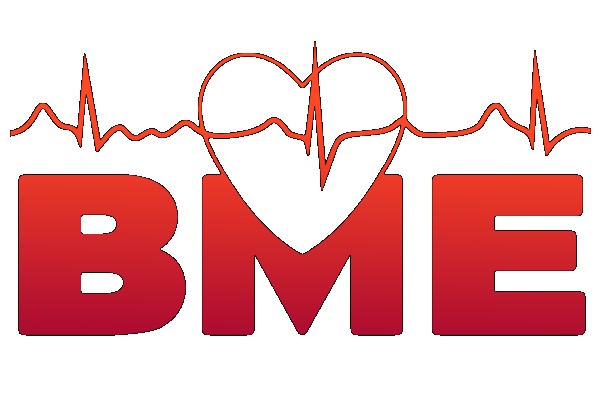Lectures:
1. Application of the requirements of international and European standards for the construction of electronic devices in biomedicine. IEC 60601-1 standard. AP and APG category devices.
2. Construction of network transformers for bioelectronics. Requirements for el. strength, capacity requirements between windings.
3. Low-power stabilizers for bioelectronics. Instrument Amplifier. Efficiency of the voltage multiplier.
4. R / I transducer for measuring windpipe. Long-line biosignal transfer.
5. Use of logic circuits in bioelectronics. Minimum Power Requirements and EMC Requirements.
6. Amplifiers for electrocardiography and electroencephalography. The issue of input impedance. Use of ultra-low power amplifiers.
7. Protection of bioelectronics against the effect of defibrillation discharges. Lightning arrester, varistor, double diode.
8. Protection of bioelectronics against electrocoagulation. Serial inductances and double diode.
9. Suppression of all-phase interference in a biosensor. Supersymmetry from the common impedance.
10. Suppression of differential interference 50 / 60Hz in a biosensor. Band stop - Notch filter. Sampling at the current frequency of the power grid.
11. Electrochemical cells for bioelectronics. Short circuit protection, warm-up control. Parasitic electrochemical cell from sensing bioelectrodes.
12. Measurement of bioadmitance. Long-term safe voltage. Logarithmic nanosiemens - skin conductivity.
13. Galvanic separation of the biosignal. Modulations used. Separating transformer, optron. Galvanically isolated amplifiers. Sources and radiation detectors.
14. Electronic gain control of bioscience. D / A converter as an electronic potentiometer. Optocoupler with photoresistor.
Labs:
1. Safety training in the laboratory. Recapitulation of analog electronics topics from the previous year: Design and calculation of voltage stabilization circuit.
2. Insulation transformer measurement. Measurement of capacitance between windings, measurement of leakage current.
3. Mid-term test. Design of stabilizer for bioelectronics, verification of function on non-soldering field.
4. Mid-term test. R / U and U / I converter connection with the operational amplifier. Verification on a non-firing field.
5. Measuring the conversion characteristic of a logic member. Verifying the effect of load impedance on the shape of the logic signal.
6. Mid-term test. Verify the log function. circuits on the FPGA emulator.
7. Validation of varistor function on impulse signal simulating reduced defibrillation pulse.
8. Verification of the function of the protective circuit with inductance and double-diode on the impulse signal simulating the reduced coagulation signal.
9. Mid-term test. Wiring to suppress matching signal. Verification on a non-firing field.
10. Mid-term test. Design and connection of the bandwidth frequency filter. Verification on a non-firing field.
11. Measurement of the load characteristic of an electrochemical cell. Calculation of source internal resistance.
12. Mid-term test. Measurement of the transmission characteristic of the opto-couple. An example of a photodiode.
13. Galvanic isolation of the biosignal by optical path with FM modulation.
14. Continuous inspection test. Demonstration of the digital potentiometer. Consultation. Granting credit.
1. Application of the requirements of international and European standards for the construction of electronic devices in biomedicine. IEC 60601-1 standard. AP and APG category devices.
2. Construction of network transformers for bioelectronics. Requirements for el. strength, capacity requirements between windings.
3. Low-power stabilizers for bioelectronics. Instrument Amplifier. Efficiency of the voltage multiplier.
4. R / I transducer for measuring windpipe. Long-line biosignal transfer.
5. Use of logic circuits in bioelectronics. Minimum Power Requirements and EMC Requirements.
6. Amplifiers for electrocardiography and electroencephalography. The issue of input impedance. Use of ultra-low power amplifiers.
7. Protection of bioelectronics against the effect of defibrillation discharges. Lightning arrester, varistor, double diode.
8. Protection of bioelectronics against electrocoagulation. Serial inductances and double diode.
9. Suppression of all-phase interference in a biosensor. Supersymmetry from the common impedance.
10. Suppression of differential interference 50 / 60Hz in a biosensor. Band stop - Notch filter. Sampling at the current frequency of the power grid.
11. Electrochemical cells for bioelectronics. Short circuit protection, warm-up control. Parasitic electrochemical cell from sensing bioelectrodes.
12. Measurement of bioadmitance. Long-term safe voltage. Logarithmic nanosiemens - skin conductivity.
13. Galvanic separation of the biosignal. Modulations used. Separating transformer, optron. Galvanically isolated amplifiers. Sources and radiation detectors.
14. Electronic gain control of bioscience. D / A converter as an electronic potentiometer. Optocoupler with photoresistor.
Labs:
1. Safety training in the laboratory. Recapitulation of analog electronics topics from the previous year: Design and calculation of voltage stabilization circuit.
2. Insulation transformer measurement. Measurement of capacitance between windings, measurement of leakage current.
3. Mid-term test. Design of stabilizer for bioelectronics, verification of function on non-soldering field.
4. Mid-term test. R / U and U / I converter connection with the operational amplifier. Verification on a non-firing field.
5. Measuring the conversion characteristic of a logic member. Verifying the effect of load impedance on the shape of the logic signal.
6. Mid-term test. Verify the log function. circuits on the FPGA emulator.
7. Validation of varistor function on impulse signal simulating reduced defibrillation pulse.
8. Verification of the function of the protective circuit with inductance and double-diode on the impulse signal simulating the reduced coagulation signal.
9. Mid-term test. Wiring to suppress matching signal. Verification on a non-firing field.
10. Mid-term test. Design and connection of the bandwidth frequency filter. Verification on a non-firing field.
11. Measurement of the load characteristic of an electrochemical cell. Calculation of source internal resistance.
12. Mid-term test. Measurement of the transmission characteristic of the opto-couple. An example of a photodiode.
13. Galvanic isolation of the biosignal by optical path with FM modulation.
14. Continuous inspection test. Demonstration of the digital potentiometer. Consultation. Granting credit.
